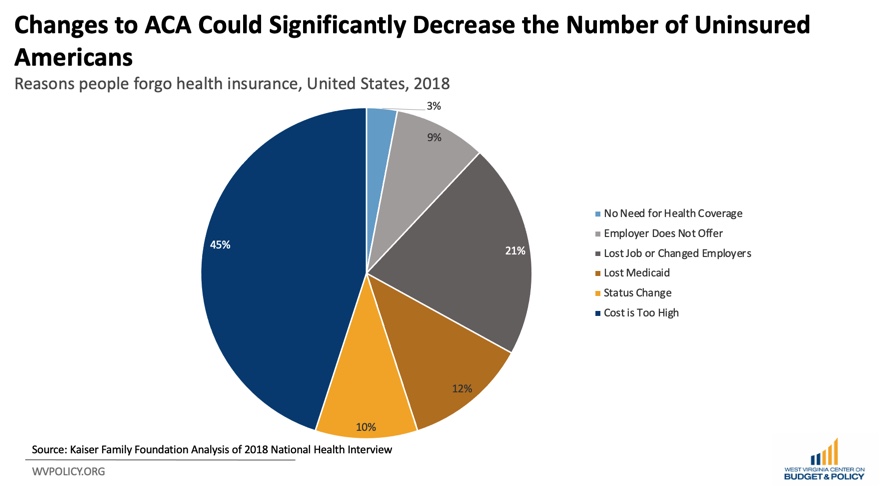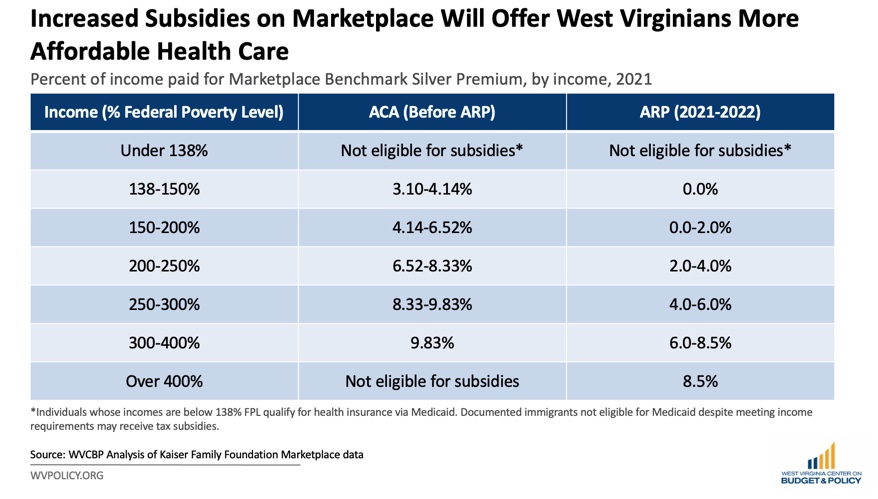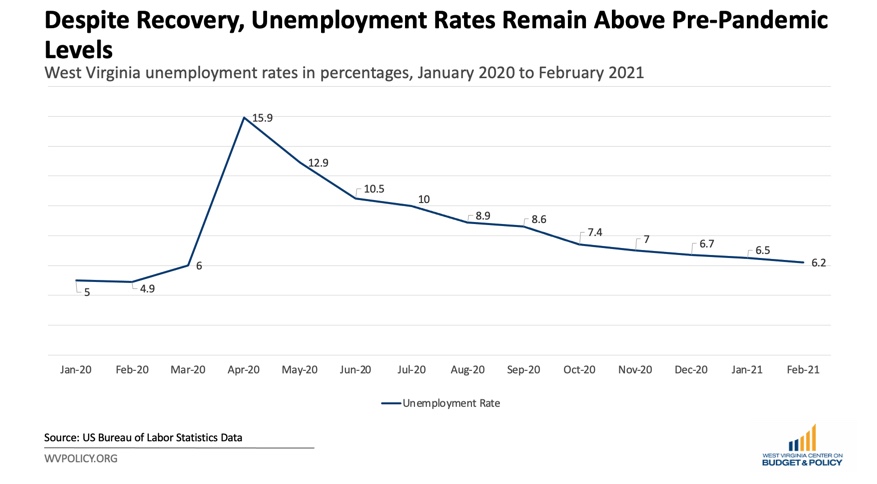Just last month, the Affordable Care Act (ACA) celebrated its eleventh birthday. The ACA is the most extensive health care reform law in the United States since the passage of Medicaid and Medicare in 1965. The ACA has granted over 20 million Americans more affordable and accessible health insurance. Beyond that, it has touched the lives of nearly every patient, even those who already had private insurance. It has done a great deal to improve patient outcomes over its lifetime — from subtle changes, such as requiring calorie counts on menus, to the broad, sweeping changes like ensuring that people with pre-existing conditions do not pay higher premiums and allowing people under 26 to stay on their parents’ insurance. It allowed states to enroll significantly more people into Medicaid and created a marketplace for those without affordable health insurance elsewhere. West Virginia was one of the biggest benefactors of these changes, undergoing the nation’s most significant drop in uninsured individuals after its implementation.
Since 2010, the ACA has made significant changes to the nation’s health care infrastructure. But despite all its accomplishments, many Americans remain uninsured today. According to the Kaiser Family Foundation, insurance costs are the primary reason individuals forgo insurance. In response to the plateauing uninsured rate — further exacerbated and highlighted by the ongoing COVID-19 pandemic — the federal government passed the American Rescue Plan (ARP) in March of 2021. Among many provisions, it has made changes to the ACA that help more people access critical care. These provisions are currently in place through 2022.
During a global health crisis, access to treatment is vital for mitigating the severity and spread of infectious diseases. Here are several ways that the American Rescue Plan will improve health outcomes in West Virginia.

First, ARP has extended the open enrollment period. Before the extension, the enrollment period was from November 1 to December 15, 2020, for 2021 coverage. The special enrollment period included in ARP began on February 15 and ends on August 15, 2021. Unlike with regular enrollment, coverage starts on the first day of the month after signup. For example, if someone enrolls on April 15, their first day of coverage would be May 1. Instead of having just six weeks to enroll in a marketplace plan, individuals will now have over seven months total.
Evidence from the past several years confirms that shortened enrollment periods decrease participation rates. By giving people more time to enroll in a plan, particularly as they experience the health and economic impacts of the pandemic, we can anticipate that more Americans will be able to access health insurance. That is just one of several ways ARP will make health insurance more accessible to West Virginians.
ARP also works to make health insurance on the individual market more affordable by increasing the amount of money that families can receive via the premium tax credit. The previous benchmarks were anywhere from just over two percent to nearly 10 percent for families whose incomes were below 400 percent of the federal poverty level (FPL). Lower-income families receive the most extensive subsidies, while families closer to the upper threshold contribute a more considerable portion of their income. Under ARP, families with incomes below 150 percent FPL are eligible for zero-dollar premium plans. Meanwhile, others between 150 and 400 percent FPL will pay premiums between zero and 8.5 percent of their income.

Relatedly, a shortfall of the ACA is that it created a subsidy cliff on the individual market. As such, another focus of this legislation that impacts people in West Virginia is addressing that cliff, which refers to the abrupt stop to subsidies that individuals who make over 400 percent of FPL experience, as shown in the table above. Just a few hundred additional dollars above the threshold could result in dramatic increases in health insurance premiums. For example, before ARP, a single person whose income equaled 399 percent FPL (about $51,390 in 2021 dollars) could receive subsidies that offset costs to equal just under 10 percent of their income. However, a person making 401 percent FPL (roughly $51,650 in 2021 dollars) would be ineligible for any subsidy that would make their health insurance more affordable. By provisionally decreasing premiums — or increasing subsidies — for everyone, including people over the 400-percent-FPL threshold, ARP will reach more people in West Virginia and across the country.
Finally, ARP includes several modifications that serve people receiving unemployment benefits. As in the broader United States, most people in West Virginia receive health insurance through their employer (44 percent in WV compared to 49.6 percent nationally). And like the rest of the nation, West Virginia lost thousands of jobs at the beginning of the pandemic, with state unemployment levels peaking at 16 percent in April 2020. While unemployment has declined, with unemployment levels returning to the single-digit range, it remains above pre-pandemic levels, even before accounting for underemployment and those who have left the labor force altogether. Because of the intimate relationship between employment and health insurance, the pandemic left many people without health insurance during a critical period.

To mitigate this gap, ARP has implemented several means of aiding people receiving unemployment benefits. For 2021 only, anyone receiving unemployment benefits at any point during this calendar year is eligible for a no-premium benchmark silver plan, regardless of their income level. During the week of March 13, 50,061 people in West Virginia filed unemployment claims, all of whom are now eligible for health care coverage with zero-dollar premiums.
These are just a few of several ways the American Rescue Plan will modify the Affordable Care Act. Each of these and more will improve health outcomes for West Virginians and people across the nation. Individuals who did not have access to affordable insurance before ARP passed should explore the marketplace. They may be surprised to find that health care is more affordable than ever, particularly for individuals and families whose incomes are around 400 percent FPL.
More broadly, this calendar year and 2022 will provide robust empirical evidence showing that these temporary provisions will make a lasting impact. Therefore, Congress should conduct further studies and implement permanent enhanced health care provisions to keep Americans healthy through the pandemic and beyond.
If you are interested in learning more about marketplace health insurance plans, please click here to get more information, view rates, and receive coverage.